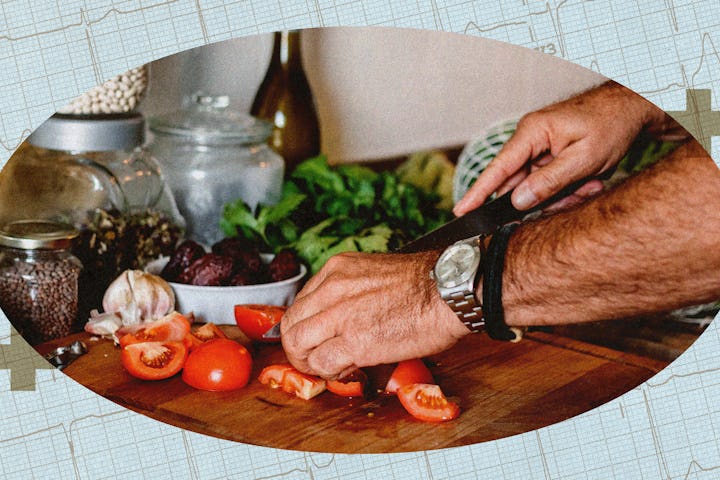These 7 Lifestyle Habits Are Linked To A Lower Risk Of Cancer
These small lifestyle changes can make a big difference.

The little things we do, or don’t do, everyday amount to a huge difference in our health. A new study found that following seven lifestyle recommendations is linked to a much lower risk of developing cancer.
For the new study, published in the journal BMC Medicine, researchers followed nearly 95,000 participants in the UK Biobank — a forward-looking cohort study with extensive health data for about 500,000 people across the UK — for an average of eight years and tracked whether they developed cancer. (Only a portion of the participants in the UK Biobank gave data on everything the researchers needed for the study.)
Each participant answered a questionnaire and had various aspects of their health measured when they joined the study to determine how well they adhered to cancer prevention recommendations from The World Cancer Research Fund and The American Institute for Cancer Research.
These recommendations include seven suggestions for cancer prevention (in addition to breastfeeding, which the study didn’t track). They are:
- Maintaining a healthy body weight, measured by body weight and waist circumference
- Being physically active, ideally focusing on at least 10 hours of moderate-vigorous physical activity per week, or, for partial credit, 5 to 10 hours a week
- Eating a diet rich in whole grains, fruits, vegetables, and beans, ideally including at least 30 grams of fiber per day
- Limiting consumption of fast foods, processed foods, and foods high in fat, starches, or sugars, measured by the percent of calories eaten each day that come from ultra-processed foods
- Limiting consumption of processed and red meat, ideally to less than 21 grams of processed meat per week and less than 500 grams of red meat per week; for context, a hamburger patty is usually between about 120 grams and 180 grams
- Limiting consumption of sugar-sweetened drinks, ideally by not drinking any
- Limiting consumption of alcohol, ideally by not drinking any, or, for partial credit, having less than 14 glasses per week
The researchers scored everyone from 0 to 7 point and analyzed how each score was linked to the risk of developing any of 14 cancers strongly linked to aspects of lifestyle. For every one-point score increase, researchers found a 7% reduction in risk of developing any of the 14 types of cancer studied. These include prostate, breast, colorectal, lung, uterine, liver, pancreatic, stomach, esophageal, head and neck, ovarian, kidney, bladder, and gallbladder.
Compared to those with the lowest scores (0 to 3.5 points), those in the middle (3.75 to 4.25 points) had an 8% lower chance of developing all cancers, and those with the highest scores (4.5 to 7 points) had a 16% lower chance.
Higher scores also correlated with lower risk of some individual cancers. For every additional point, there was a 10% reduction in risk of developing breast cancer and colorectal cancer, 16% for esophageal, 18% for kidney, 22% for liver, 24% for ovarian, and 30% for gallbladder. For some of the other types of cancer, not enough people developed them for researchers to make specific conclusions about how following the recommendations is linked to risk.
The average total score was 3.8 points. For all cancers combined, the lowest risk was in people who scored between 5.75 and 7 points.
"People should aim to follow as many of the Cancer Prevention Recommendations as they can to reduce their risk of cancer and other non-communicable diseases,” study co-author Fiona Malcomson, a research associate at Newcastle University's Human Nutrition Research Centre, told Insider.
“However,” she continued, “any change made will have a positive impact on reducing cancer risk, for example, increasing your adherence score by half a point by going from eating 2.5 servings of fruits and vegetables per day to reaching the recommended five servings."
The researchers note that a next step should be to analyze how each of the seven recommendations is linked to cancer risk, to determine if any are more important than the others.